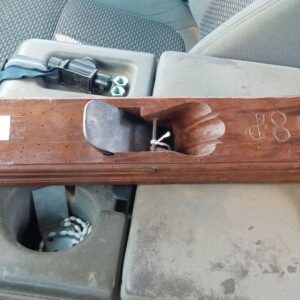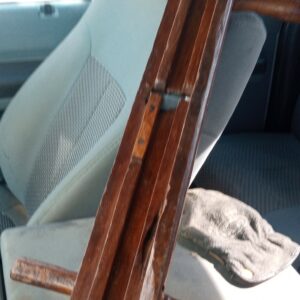A friend of mine and I like old hand planes and we were in an antique mall today. We found this old hand plane in the pictures and the friend bought it and now we have questions about it. I’ve never seen a plane like this before. It looks like a rabbit plane but it has another place for the plane to rest along. I also don’t understand what the four handles are for. The tag that came with this plane said that this plane was European style and that it was the mid 1800s but I don’t see a identifier for the year. I know Asian style planes such as Japanese planes are pulled towards the user but I always thought that European style and American style planes were used pushing away from the user however this looks like it might come towards the user. Does anyone have any knowledge about this sort of plane?
Discussion Forum
Get It All!
UNLIMITED Membership is like taking a master class in woodworking for less than $10 a month.
Start Your Free TrialDiscussion Forum
Digital Plans Library
Member exclusive! – Plans for everyone – from beginners to experts – right at your fingertips.
Highlights
-
Shape Your Skills
when you sign up for our emails
This site is protected by reCAPTCHA and the Google Privacy Policy and Terms of Service apply. -
 Shop Talk Live Podcast
Shop Talk Live Podcast -
 Our favorite articles and videos
Our favorite articles and videos -
E-Learning Courses from Fine Woodworking
-














Replies
I can't see the details of the blade; does it cut a tongue? Wood moulding planes with wide cuts often had front handles for a second person (apprentice) to pull to help get the plane thru the wide cut. This looks like what your friend has.
Difficult to see the detail but my first take is that it could be a multifunction plane. Straight edge a rough sawn board, and two different ways to produce a rabet. Or to create a tongue for T&G? Two man for long boards.
So the blade is a full blade as you'd normally see on a smoothing plane, not molded to fit the accents of this plane. If you're looking at the bottom of this plane you'll see 2 rails. This blade extends from one rail to the other. I thought about possibly T&G but I'm not sure how that's possible since the blade is level with the 2 rails but that option is what makes the most sense.
It looks like it was specially made to do a specific job.
Perhaps ensuring that a protrusion was exactly the right height?
You could imagine it being used to ensure the tongues on T&G boards were consistent, or perhaps even being an easy way to stay square while jointing a longer board.
In truth, I've no actual clue, but it's fun to speculate.
I agree. What had always amazed and inspired me about hand planes and many of the older tools in general is that when they found a need they made something to fill it. Nowadays people just look to the big box stores or Amazon. If it's not there then nothing can done.
I think you have a plane without the original iron & wedge. It likely started life as half of a matched T&G set. The cutter would have had two legs matching the rails on the sole.
I just found a similar one at a thrift store.
This forum post is now archived. Commenting has been disabled